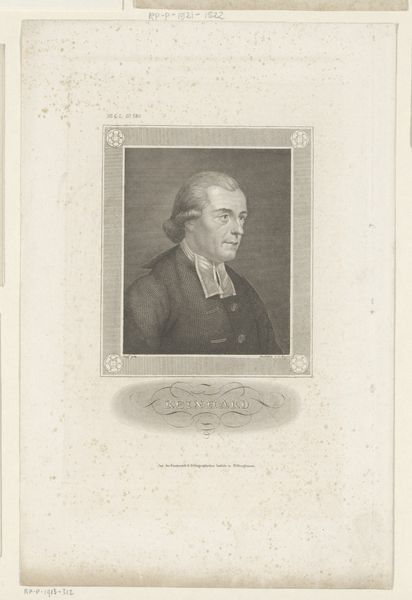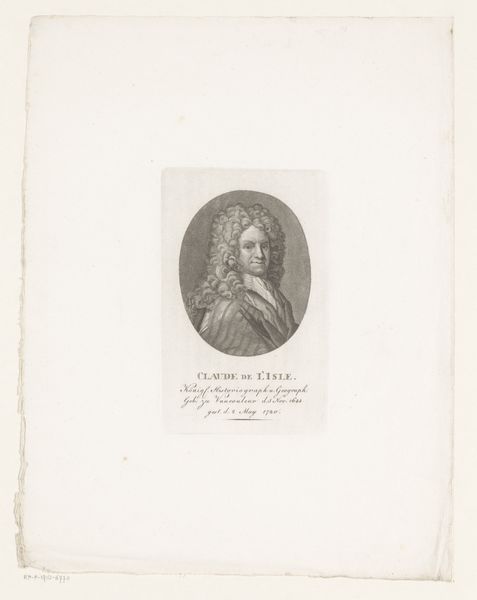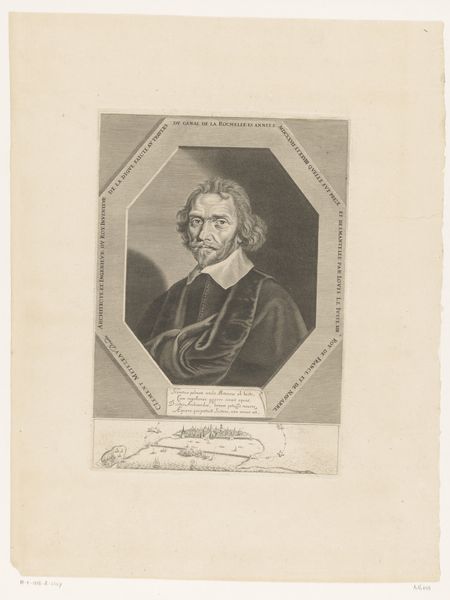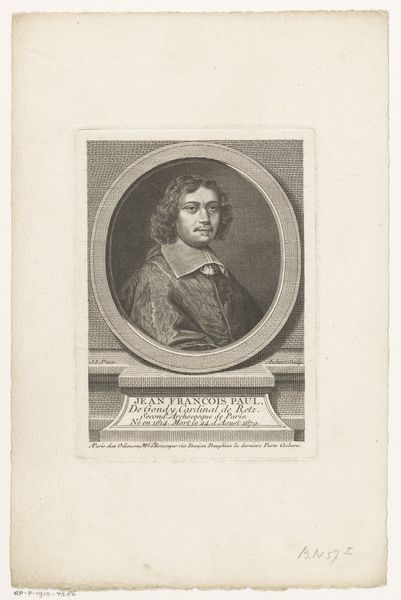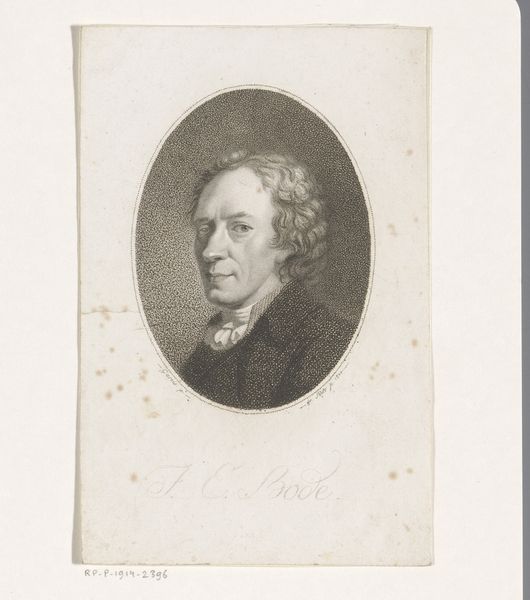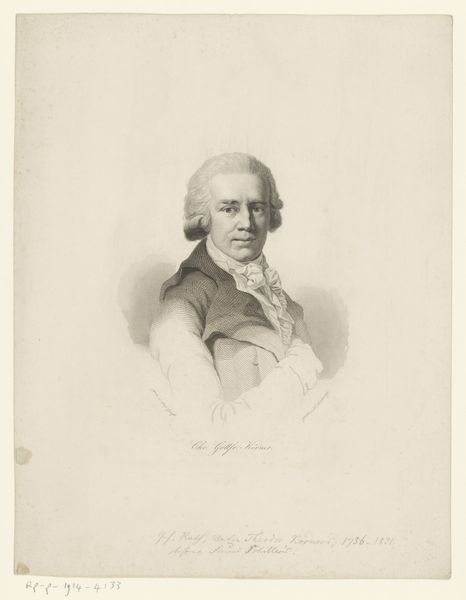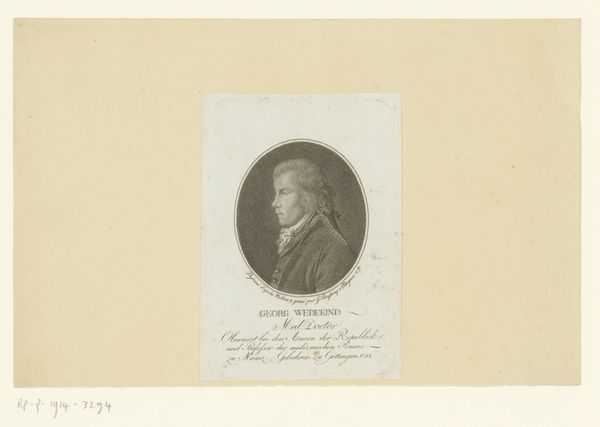
drawing, paper, ink, engraving
#
portrait
#
drawing
#
neoclacissism
#
paper
#
ink
#
engraving
Dimensions: height 168 mm, width 104 mm
Copyright: Rijks Museum: Open Domain
Curator: Here we have Johann Friedrich Bolt's "Portret van Thomas Erskine" created in 1795, a work currently held in the collection of the Rijksmuseum. The piece, made using ink on paper with engraving, presents us with an interesting study in neoclassical portraiture. Editor: My first thought? Restrained elegance, but with a secret smirk. There's a quiet confidence radiating from the man, framed by that meticulously curled wig. It feels like a Regency novel in visual form. Curator: Exactly. Bolt employs the clear lines and balanced composition so typical of neoclassicism. Note the oval frame, a deliberate choice to evoke classical cameos, suggesting both refinement and authority. The engraved medium lends itself perfectly to the precision valued in this period, a sense of clarity and order after, perhaps in reaction to, the exuberance of the Baroque. Editor: I’m fascinated by his gaze—it's direct but not confrontational. It's like he's inviting you to join in a witty observation, knowing you'll understand the subtext. That ink really captures the glint in his eye! It's quite impressive, actually, for something that could have ended up looking very flat. Curator: That's the engraver's skill at play, definitely. Also consider Erskine's attire: the precisely tied cravat, the double-breasted coat – each element speaks to the status and dignity he held as a 'Brittischer Rechtsgelehrter'— a British legal scholar. Each aspect contributing to a carefully constructed image of enlightened authority. Editor: The slight asymmetry in his expression adds a layer of depth, a suggestion that behind the wig and proper attire, there's a real person, a hint of playful intelligence. And the font? So clean and crisp! There's almost an implied wink with that period after Erskine's name; one could imagine him doing that after nailing an argument. Curator: A small detail but indicative of how neoclassicism valued rationality. Bolt manages to distill a very modern concept—individuality—within a consciously historical style, creating a portrait that still feels relevant today. Editor: It’s a wonderful demonstration how, through carefully observed details and skillful execution, an image, especially something seemingly rigid, like an engraved portrait can resonate, revealing hidden aspects of the sitter's character and leaving a memorable impression across time.
Comments
No comments
Be the first to comment and join the conversation on the ultimate creative platform.

